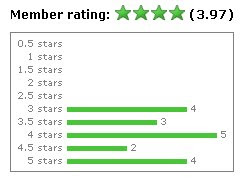You might think that I am a dinosaur. I got into libraries just before computerized circulation systems became popular. I worked for two libraries during data entry projects for their first computers. I remember their microfilm-based checkout systems; it took these libraries six months to notice an item had not returned, develop the microfilm record of the checkout transaction, and send an overdue notice.
I am actually one of the small mammals that saw the dinosaurs die off. Opportunists, we evolved into a dominant species, computer-savvy librarians. Computers and their software led us to change more than just our library practices and procedures. They let us change our attitudes.
When I started working in libraries, few librarians would ever consider changing the call number on a book. Too much work had gone into assigning the call number and processing the item. Changing it would require not only slapping a new label on the spine, but also pulling all the catalog and shelflist cards, using buff-colored whiteout on the old numbers, lining up the cards in a typewriter to type new numbers, and refiling all the cards. The prevailing attitude was that libraries had to live with the old call numbers no matter how bad they were.
I think the seeds of change were planted by word processing software. The idea that a document could be saved and easily modified at a later date was revolutionary thinking. The real opportunity for change came when libraries closed their card catalogs.
Here is what I have seen. I will not name libraries as my intention is not to criticize. Many libraries were like them.
In my first job I worked in a city library system with numerous branch libraries. All cataloguing was done in the central library and catalog cards were filed in two buildings (the central library and the appropriate branch). Every six months branch libraries received two floppy book catalogs (produced from punch cards run through a mainframe computer). The two large paper-covered books let readers browse (if they were up to the effort) for authors or titles in libraries throughout the city. In this situation, no one would ever request a call number change. The paperwork would take months.
In my second job the situation was similar. The library served three counties, and there was a three month cataloguing/book processing backup in the best of times. No one had time to change a call number.
My third job was in a moderately small suburban library that was part of a growing consortium that was building a computerized checkout system. Call number data had not been entered into the system. The small library had its own cataloguer, who was willing to change call numbers if requested, but it was still a lot of work pulling and refiling catalog cards. We changed numbers rarely, but we did actually do it to update several call numbers that Dewey authorities had changed.
Fast forward past this increasing tedious litany to the exciting present.The Thomas Ford Memorial Library was
Library 2.0 user-friendly before the label was ever used. In the mid-1990s we began slowly changing call numbers when we found our books on topics shelved in numerous Dewey locations. Our thinking that was that our collection was too small to allow us to leave the books separated. When we had only two or three books on a subject, we needed them together. Our readers needed them together so they would find them. We did this even when it meant editing cards, refiling, and updating a computer record.
When we disposed of the card catalog, we increased our effort. We massively changed call numbers in the literature section to simplify access. Now all poetry books by an American author are at 811 with no era-related decimals added. (We took the idea from the Downers Grove Public Library.) We reorganized the books on painters, which were a mess. Claude Monet had had three call numbers. We also reworked the gardening and landscaping areas. Before this effort readers could find books on roses under four call numbers. Thomas Ford staff has been great throughout the effort. We discuss what needs to be done and then do it. Current technology makes it possible, so "Why not?" We have a developed a "right away" staff culture, which goes beyond just changing call numbers.
I said that we have seen the dinosaurs die off. I am not sure that they have all died as yet. Are you a dino or a quickly evolving mammal? How are your library's call numbers?
 I am listening to Bread & Steel: Illinois Poets Reading from Their Works. This is my fourth time through the twenty-four poems on the CD, and at this point I am developing favorites. The lead track "Benediction" by Stuart Dybek is mighty fine, full of sharp images, flash and sound. I marvel at how in "Oceans of Grass" Edward Hirsch can tell such a moving story in only sixty-eight seconds. "Bath" by John Knoepfle remembers a story about Abraham Lincoln, very appropriate for an Illinois poetry collection. In "Sufficiency of the Actual" Kevin Stein tells us the lessons we can learn from injured crickets and the members of the rock group The Who. Martha Vertreace-Doody brings Chicago and Bagdad dangerously together in "Walking under Night Sky."
I am listening to Bread & Steel: Illinois Poets Reading from Their Works. This is my fourth time through the twenty-four poems on the CD, and at this point I am developing favorites. The lead track "Benediction" by Stuart Dybek is mighty fine, full of sharp images, flash and sound. I marvel at how in "Oceans of Grass" Edward Hirsch can tell such a moving story in only sixty-eight seconds. "Bath" by John Knoepfle remembers a story about Abraham Lincoln, very appropriate for an Illinois poetry collection. In "Sufficiency of the Actual" Kevin Stein tells us the lessons we can learn from injured crickets and the members of the rock group The Who. Martha Vertreace-Doody brings Chicago and Bagdad dangerously together in "Walking under Night Sky."

























